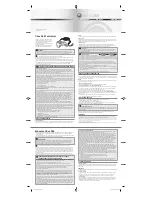
Chapter 6: Using the Web Interface
190
Overview of the Cascading Modes
You must apply a cascading mode to the cascading chain. See
Setting
the Cascading Mode
(on page 187).
There are two cascading modes: Bridging and Port Forwarding.
In the following illustration, it is assumed that users enable the DHCP
networking for the cascading chain comprising four devices. In the
diagrams, "M" is the master device and "S" is a slave device.
Illustration:
"Bridging" mode:
In this mode, the DHCP server communicates with every cascaded
device respectively and assigns four
different IP addresses. Each
device has its own IP address.
The way to remotely access each cascaded device is completely the
same as accessing a standalone device in the network.
"Port Forwarding" mode:
In this mode, the DHCP server communicates with the master device
alone and assigns one IP address to the master device. All slave
devices share the same IP address as the master device.
You must specify a 5XXXX port number (where X is a number) when
remotely accessing any slave device with the shared IP address. See
Port Number Syntax
(on page 191).
Summary of Contents for Raritan SRC-0100
Page 114: ...Chapter 6 Using the Web Interface 102...
Page 291: ...Chapter 6 Using the Web Interface 279...
Page 301: ...Chapter 6 Using the Web Interface 289 6 Click Create to finish the creation...
Page 311: ...Chapter 6 Using the Web Interface 299...
Page 312: ...Chapter 6 Using the Web Interface 300 Continued...
Page 625: ...Appendix H RADIUS Configuration Illustration 613 Note If your SRC uses PAP then select PAP...
Page 630: ...Appendix H RADIUS Configuration Illustration 618 14 The new attribute is added Click OK...
Page 631: ...Appendix H RADIUS Configuration Illustration 619 15 Click Next to continue...
















































